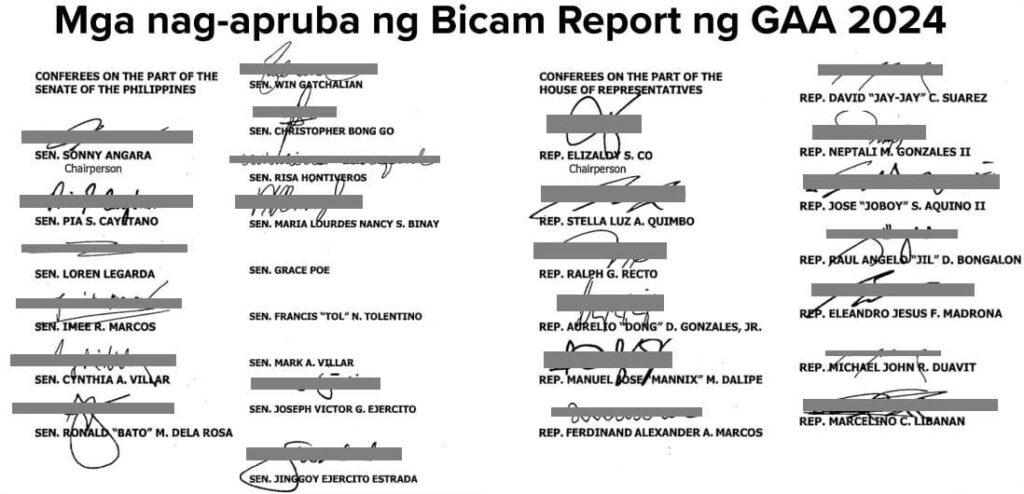By DIEGO MORRA
Those who still harbor the illusion that landlessness would wither away before the Marcos Jr. administration officially ends in 2028 must be ready for a rude awakening. Despite the billions of pesos paid to landlords via the Agrarian Reform Fund (ARF) administered by Land Bank of the Philippines (LandBank), the biggest landlords cut deals with government, organized “landless peasants” into coops of beneficiaries that later signed deals with the same landlords as “managers” or “joint venture” partners in making sugar plantations “profitable.”
These haciendas employed the beneficiaries of the Comprehensive Agrarian Reform Program (CARP) as workers, paid slave wages and ended up being indebted to their “joint venture” partners like the Cojuangcos, whose managers even had the gall to secure ownership of the land from “unqualified” or “disqualified” CARP beneficiaries. Thousands of hectares of CARP lands are technically still under dispute, many areas have not been surveyed and the land acquisition and distribution (LAD) have ground to a halt with more than a little help from the Department of Agrarian Reform (DAR.) Include the many cases filed against agrarian reform beneficiaries (ARBs) questioning their rights to the land after working the soil for decades.
As the nation celebrated the 37th anniversary of CARP on June 10, 2025, peasants remember how two members of landowning families went against their class interest by donating their share of the family estates to landless tillers. One of them, Luis Jalandoni, former chairman of the National Democratic Front of the Philippines (NDF) died in Utrecht, The Netherlands recently. A former Roman Catholic priest and organizer of the Christians for National Liberation (CNL), Jalandoni gave away his inheritance to those who have enriched the land in Negros. Similarly, Jose Ma. Sison, founding chairman of the Communist Party of the Philippines (CPP), who died in 2022, also distributed his share of the family’s properties to the peasants in Cabugao, Ilocos Norte, consistent with the belief that the soil belongs to the tillers.
The two gentlemen never announced the distribution of their land, even as their actions spoke loudly about what social justice means. If Jalandoni and Sison can do it, why can’t landlords like the Cojuangcos, the Negros hacenderos and the Marcoses not do it? There is no road to Damascus for these creatures. Yet, the road to subvert CARP itself was busy, with landlords offering to sell their properties only to regain control of the same using dubious “cooperative” and joint venture (JV) ploys that reduce the ARBs to underpaid agricultural workers. In most cases, many cases had been lodged against ARBs to prevent their installation agricultural estates while landlords already paid by Land Bank of the Philippines (Land Bank) retained control of CARP lands through “joint ventures” with farmers that further worsened their indebtedness to the very same landlords that had exploited them.
After working on CARP and its successor programs, Task Force Mapalad (TFM) belatedly acknowledged that the statistics for the agrarian reform have been subjected to “dagdag-bawas,” with the DAR reporting an astronomical accomplishment rate for itself, padding the successes in CARP land distribution for both Ferdinand Marcos Jr. and Ferdinand Marcos Sr. (which is strange since CARP became a law only in 1988), and bowdlerizing the data to reflect the incredulous efficiency of DAR, which is notorious for protecting landlords. Nothing has been said about reports that the deceased dictator also owned 27,000 hectares of land in the mountains of Villaverde, Nueva Vizcaya.
What got TFM’s goat is DAR’s bragging that by yearend 2025, the department had already distributed land totaling 4,972,585.8 ha. or 91% of the total 5,463,827 ha covered by the land acquisition and distribution (LAD) scheme for CARP. Creatively, DAR included in its LAD accomplishment what it claimed were parcels of land totaling 114,259 ha that were distributed during the martial law regime of Marcos Sr. From 1972 to 1986, DAR egregiously insisted that the elder Marcos distributed 70,178 ha to landless peasants while in 1987, right after the Marcoses were ousted, 44,081 ha were purportedly distributed by President Cory Aquino. Thus, 114,259 ha were added to the total CARP LAD accomplishment of 4.97 million ha.
TFM raised hell as there was no CARP from 1972 to 1987. CARP, also known as Republic Act No. 6657, was enacted only in 1988 and DAR must be engaged in legerdemain for manufacturing facts and deceiving ARBs as well as Malacanang, which is not expected to swallow the guff. The group went farther, comparing DAR’s data with those of the Philippine Statistics Authority (PSA) and found out that in 2009, 2010, 2011, 2012 and 2014, DAR reported glowing accomplishments and exceeded PSA statistics by 63,685.69 ha. In 2009, DAR reported distributing 11,301,96 ha more than the confirmed PSA figure. The following year, the excess accomplishment figure was 13,597.96 ha, 8,394.81 ha in 2011, 19,292.24 ha in 2012 and 11,098.72 ha in 2014.
These are not mere clerical errors but deliberate efforts to prettify the record of Marcos Jr., who has fared as badly as his father who had declared pompously that he would deliver peasants from “bondage to the soil.” Now, DAR is telling all Filipinos that Marcos Jr. will wipe out landlordism by 2028, conditioning the minds of millions that his agrarian reform program is on its finishing touches, with DAR stunning the entire country with the claim that LAD balance at yearend 2024 was just 161,235.82 ha or 521,998.18 has. short of the total LAD balance based on combined data from the department and the PSA. By manufacturing data, TFM complained, the DAR and the Marcos Jr. administration will create the illusion that the government is exterminating landlessness. Worse, reports indicate that the regime might even encourage farmers to part with their land and even sell it, or transform it into equity in agribusiness enterprises. Splitting the titles of ARBs is meant to create a market for arable land available for local and foreign investors, something that was not contemplated by CARP. In short, CARP is a dead duck, eviscerated by the bogus promise of land distribution by the Duterte and Marcos Jr. administrations, both of them the worst implementors of CARP. Add the program to the long list of Tokhang victims.




